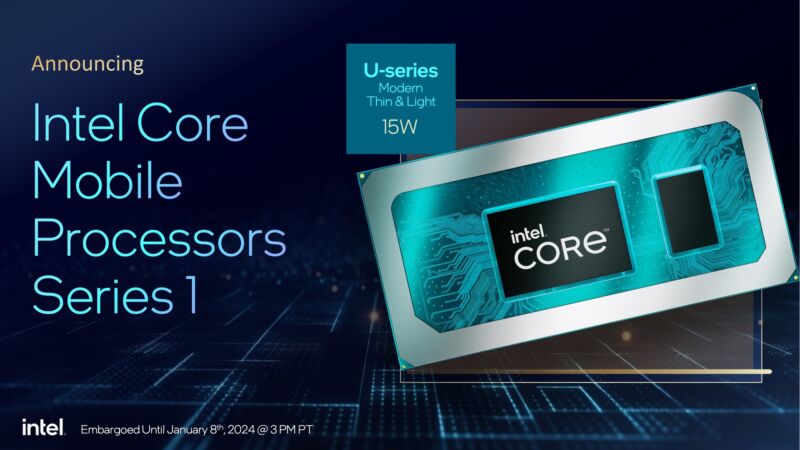
Intel
Intel usually uses CES to fill out the processor lineups that it launched late the year before, and that hasn’t changed this year. The company has announced a full range of 14th-generation Core desktop CPUs, some new 14th-generation Core CPUs for high-end gaming and workstation laptops, and the first non-Ultra chips to bear the new “Core 3/5/7” branding that sheds the generational branding entirely. We’ll go over the updates shortly.
But my main takeaway, as a long-time observer of processor branding, is that Intel had made its new naming system even more confusing for people who actually want to know what kind of processor they’re getting.
Intel said in October that it was sticking with the 14th-generation branding for its new desktop CPUs because they were so similar to the 13th-generation chips (they all use the same underlying Raptor Lake architecture, itself a minor revision of the 12th-gen Alder Lake). It makes some degree of sense that it’s being extended to the HX-series laptop chips, because these have always been desktop silicon repackaged for laptop use. So far so good.
But what’s frustrating is that the new Series 1 Core 7, Core 5, and Core 3 chips are also based on a clock speed bump of Raptor Lake, rather than the all-new Meteor Lake architecture used in the Core Ultra CPUs Intel announced a month ago. The Core 7 150U, Core 5 120U, and Core 3 100U share all of the same key specs with last year’s 13th-generation U-series processors, including CPU core count (two P-cores and either 4 or 8 E-cores, depending on the chip), RAM support, GPU, and power use. They also lack new Meteor Lake features like an onboard NPU and Intel Arc graphics.
-
We aren’t even going to talk about the phrase “Intel Core Processors (Series 1) U-series Processors,” a sequence of seven words that includes both “series” and “processors” twice.
Intel -
There’s nothing really new about the Core platform, compared to the 13th-generation U-series chips.
Intel
The difference is that the Series 1 chips have incrementally boosted their peak clock speeds, and the Intel Iris Xe integrated GPU branding has been retired (these all simply have “Intel Graphics,” and Intel doesn’t indicate whether the number of graphics execution units has changed). Other than that, they seem to be roughly as different from Intel’s 13th-generation CPUs as the other processors in the 14th-generation Core lineup, which is to say, “not very.”
None of this is to imply that the Series 1 Core chips are scandalous or unprecedented; for better or worse, Intel and other companies release tweaked versions of old chips as “new” ones all the time. But to announce a major generational branding change, and then to withhold the new branding from some products because they’re too similar to older ones, and then to apply the new branding to other products that are just as similar to older ones is bewildering. This is the same company that recently built a slide deck accusing AMD of playing branding games designed to mislead people about the age of its processors. You can, at least, look for the “Ultra” label to reliably separate the all-new chips from the old ones. But it’s not immediately clear how this new branding scheme is better or less confusing than the old one.
But I digress.
Chips with the new Core branding will arrive in laptops beginning this quarter. Here is what you need to know about the rest of Intel’s 14th-generation chips.

